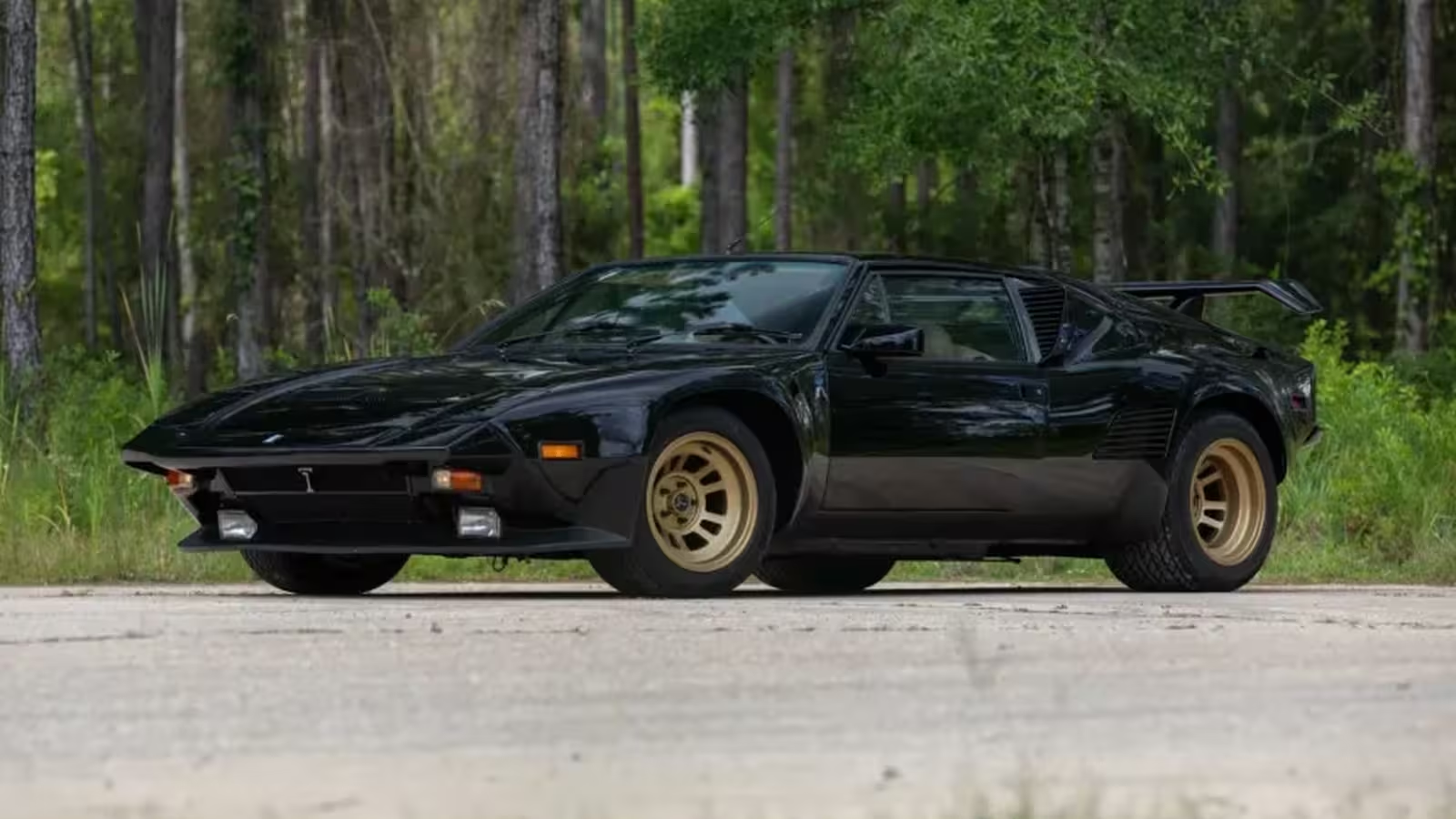6 Minutes
The 1980s were a golden era for exotic performance cars, with groundbreaking mid-engine supercars redefining automotive engineering and style. Although the advantages of a mid-engine layout—such as superior weight distribution and sharper handling—had been evident in motorsport, it took years for carmakers to fully embrace this setup in high-performance road cars. Pioneers like the Matra Djet and Lamborghini Miura paved the way, and by the 1980s, car enthusiasts witnessed the birth of several mid-engine legends. Here, we spotlight five of the most breathtaking mid-engine supercars from that unforgettable decade, examining their specs, design, performance, and cultural impact.
De Tomaso Pantera GT5-S: The Accessible Italian Exotic
Founded in 1959, De Tomaso swiftly made a name for itself amongst Italian sports car giants. After experimenting with mid-engine platforms in its early Vallelunga and Mangusta models, De Tomaso struck gold with the Pantera. Debuting in 1971, the Pantera stood out as a more attainable alternative to Porsche, Ferrari, and Lamborghini—thanks in part to its robust and easy-to-maintain Ford-sourced V8 engine.
By 1984, the Pantera evolved into the GT5-S, unveiled at the Turin Motor Show. The GT5-S featured wider wheel arches, a prominent rear spoiler, and smoother, more integrated bodywork, drawing inspiration from its racing predecessor, the GT5. Its powertrain—a 5.8-liter (351 cubic inch) Ford Cleveland V8 with a Holley four-barrel carburetor—generated 345 horsepower, paired with aggressive yet elegant Italian design cues.
While not the fastest in its class, the Pantera GT5-S’s combination of affordability, reliability, and exotic looks made it a true 1980s icon. The GT5-S offered supercar performance with far less maintenance headache, positioning itself as the everyman’s Italian exotic.
Key Specifications:
- Engine: 5.8L V8 (Ford Cleveland)
- Power: 345 hp
- Transmission: 5-speed manual
- Distinctive Features: Wide fenders, integrated front/rear bumpers, large rear spoiler
Ferrari 288 GTO: The Genesis of Ferrari’s Modern Supercars
Ferrari made a powerful statement in the 1980s with the unveiling of the 288 GTO in 1983. Designed by Leonardo Fioravanti at Pininfarina and developed under chief engineer Nicola Materazzi, this mid-engine marvel was intended to dominate high-speed circuits—and it certainly delivered.
Though derived from the 308 GTB platform, the 288 GTO was nearly a new creation, built with motorsport in mind. Its 2.9-liter twin-turbocharged V8 produced 395 horsepower, launching it to the status of one of the most formidable supercars of the decade. The 288 GTO is widely celebrated as Ferrari’s first true ‘halo’ car, setting the stage for the genre-defining F40.
Originally, the 288 GTO was meant for Group B homologation, but changes in FIA regulations redirected its legacy. Instead, the 288 GTO formed the foundation for future icons and remains highly coveted by collectors and enthusiasts.
Specifications & Performance:
- Engine: 2.9L twin-turbo V8
- Power: 395 hp
- 0-60 mph: approx. 4.9 seconds
- Transmission: 5-speed manual
- Unique Features: Lightweight body, advanced turbocharging system
Ferrari Testarossa: An Icon of Design and Popular Culture
No list of 1980s supercars would be complete without the Ferrari Testarossa. Released in 1984, the Testarossa became Ferrari’s flagship model, with its sharp, wedge-shaped body and dramatic side strakes capturing worldwide attention. Its design, penned by Pininfarina, made it one of the most recognizable vehicles of the era and a pop-culture sensation.
Underneath its bold exterior, the Testarossa housed a mid-mounted 4.9-liter flat-12 engine, initially producing 385 hp and later increased to 434 hp before the end of its production run in 1996. This supercar could hit 180 mph, reinforcing its high-performance credentials.
Widely featured in films, music videos, and TV shows—most famously ‘Miami Vice’—the Testarossa became synonymous with 1980s wealth and style. Its combination of exotic looks, potent power, and relative practicality (by supercar standards) led to strong sales and enduring desirability.
Specifications & Features:
- Engine: 4.9L flat-12
- Power: 385–434 hp
- 0-60 mph: approx. 5.0 seconds (varies by year)
- Transmission: 5-speed manual
- Hallmark: Iconic side strakes, rear engine cover ‘cheese graters’
Lamborghini Countach LP5000 Quattrovalvole (Qv): The Ultimate Eighties Poster Car
After the legendary Miura, Lamborghini cemented its status as a supercar pioneer with the Countach, debuting in 1974 but continually evolving throughout its 16-year production life. In 1985 came the LP5000 Quattrovalvole, a major update featuring the latest advancements in Lamborghini’s V12 engine technology.
The LP5000 QV (“quattrovalvole” meaning four-valve) boasted a mid-mounted 5.2-liter V12 capable of an impressive 449 hp (in European spec). Distinctive details, like wider fender flares, massive rear wings, and angular lines, gave the Countach an undeniably futuristic stance. Its audacious design set the benchmark, and for many, posters of the Countach 5000 QV decorated bedroom walls across the globe.
With thrilling acceleration and top speeds surpassing 180 mph, the Countach maintained its rightful place at the pinnacle of the supercar hierarchy throughout the 1980s.
Performance Data:
- Engine: 5.2L V12 (four valves per cylinder)
- Power: Up to 449 hp
- 0-60 mph: under 5 seconds
- Price Positioning: Premium exotic, targeted at the ultra-luxury market
- Signature Traits: Scissor doors, wide-body stance, rear wing
Ferrari F40: The Pinnacle of Raw 1980s Performance
No conversation about 1980s supercars is complete without the Ferrari F40. Conceived following the cancellation of the Group 4-based 288 GTO Evoluzione program, the F40 was introduced in 1987 as Ferrari’s ultimate road-going machine, honoring Enzo Ferrari’s vision of pure, uncompromised driving.
The F40 took performance to another level, featuring a 2.9-liter twin-turbo V8 producing up to 477 hp. Constructed from lightweight materials such as Kevlar, carbon fiber, and aluminum, the F40 prioritized raw speed and agility over comfort—it lacked power windows, carpeting, and even door handles, all in the pursuit of minimizing weight.
Capable of hitting 0-60 mph in under 4 seconds and achieving 201 mph, the F40 smashed records and set new standards for supercar capabilities. Its iconic shape, signature triple exhausts, and rear wing still evoke awe decades later. For many, the F40 remains the most purebred Ferrari supercar ever built.
Key Technical Stats:
- Engine: 2.9L twin-turbo V8
- Power: 477 hp
- Weight: circa 2,425 lbs (1,100 kg)
- Top Speed: 201 mph (324 km/h)
- Build Philosophy: Maximize performance, minimize weight
Comparing 1980s Mid-Engine Supercars
The 1980s supercar landscape was a showcase of technological progress and radical design. Models like the De Tomaso Pantera GT5-S delivered Italian panache at a lower entry price, Ferrari’s 288 GTO and F40 brought turbocharged power and track focus, the Testarossa added everyday usability and pop icon status, while the Lamborghini Countach LP5000 QV epitomized design drama and high-speed thrills.
Each supercar targeted different priorities—raw performance, design brilliance, cultural appeal, or accessibility—but all contributed immensely to the evolution of the high-performance automotive world. Even today, these mid-engine masterpieces are prized entries in collections and a source of inspiration for modern supercars.
Whether you’re drawn to the engineering prowess of the Ferrari F40 or the wild style of the Lamborghini Countach, the 1980s remain a defining decade for the mid-engine supercar, forever raising the bar for sports car enthusiasts worldwide.
Source: autoevolution



Comments